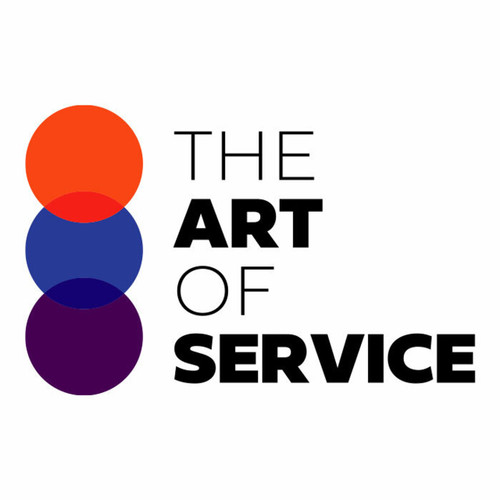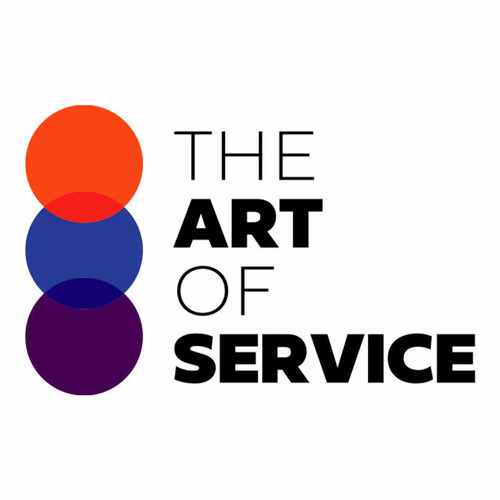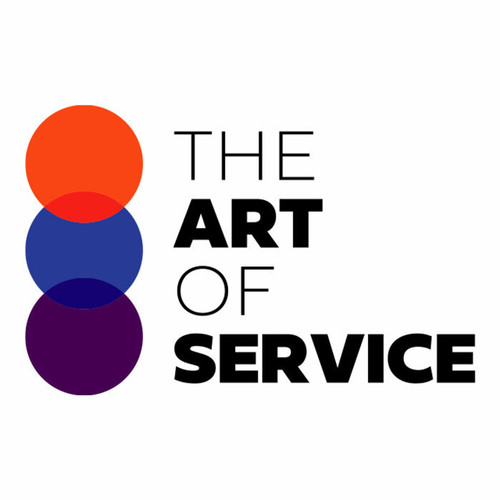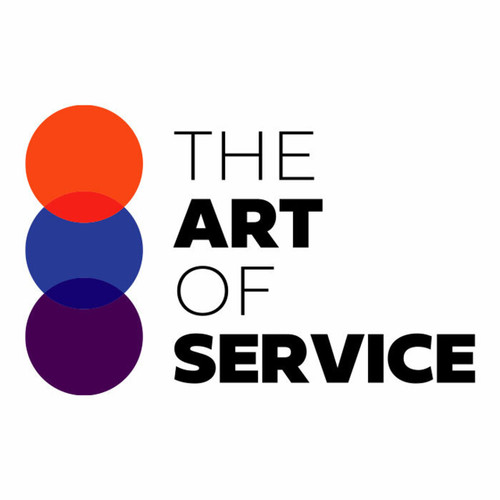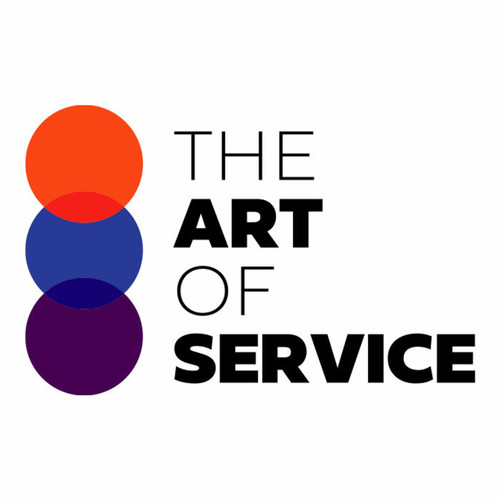Say goodbye to struggling with outdated information and subpar results.
Our dataset contains 1524 meticulously prioritized requirements, practical and effective solutions, and real-life case studies for you to draw inspiration from.
You don′t have to waste endless hours searching for the right questions to ask or solutions to implement.
With our Knowledge Base, you can easily and efficiently determine the most urgent issues and scope your project accordingly.
This means faster results and improved performance for your business.
But what sets us apart from our competitors and alternatives? Our Knowledge Base is specifically designed for professionals like you.
We understand your needs and have curated a product that caters to your specific requirements.
Plus, our dataset is constantly updated to ensure that you have access to the latest and most relevant information in the ever-evolving field of systems architecture and high performance computing.
Our product is incredibly user-friendly, making it easy for you to navigate and find exactly what you need.
No more wasting time and resources on DIY solutions or costly alternatives.
Our Knowledge Base is the most comprehensive and affordable option on the market.
Let′s talk about the benefits.
By utilizing our Knowledge Base, you will streamline your decision-making process and improve the overall efficiency and effectiveness of your systems architecture and high performance computing strategy.
With clear and concise solutions at your fingertips, your business will see a significant increase in productivity and performance.
Still not convinced? Our dataset is backed by extensive research and backed by top industry experts.
We have thoroughly researched and analyzed all aspects of systems architecture and high performance computing, ensuring that our Knowledge Base delivers the most accurate and valuable information to our users.
Not just for individuals, our Knowledge Base is also a game-changer for businesses.
By adopting our dataset, your organization will save time and resources, while also gaining a competitive edge in the market.
And did we mention that our product is cost-effective? Our Knowledge Base offers the best value for your money, with no hidden fees or subscriptions.
We believe in transparency, so here are the pros and cons.
Pros: easy to use, constantly updated, designed for professionals, affordable, saves time and resources, supports business growth.
Cons: you may never want to go back to using other outdated and inefficient methods of systems architecture and high performance computing.
In conclusion, our Knowledge Base is your ultimate resource for all things systems architecture and high performance computing.
It will revolutionize the way you approach your projects and deliver outstanding results.
Don′t just take our word for it, try it out for yourself and see the difference it can make.
Take control of your systems architecture and high performance computing strategy today and elevate your business to new heights!
Discover Insights, Make Informed Decisions, and Stay Ahead of the Curve:
Key Features:
Comprehensive set of 1524 prioritized Systems Architecture requirements. - Extensive coverage of 120 Systems Architecture topic scopes.
- In-depth analysis of 120 Systems Architecture step-by-step solutions, benefits, BHAGs.
- Detailed examination of 120 Systems Architecture case studies and use cases.
- Digital download upon purchase.
- Enjoy lifetime document updates included with your purchase.
- Benefit from a fully editable and customizable Excel format.
- Trusted and utilized by over 10,000 organizations.
- Covering: Service Collaborations, Data Modeling, Data Lake, Data Types, Data Analytics, Data Aggregation, Data Versioning, Deep Learning Infrastructure, Data Compression, Faster Response Time, Quantum Computing, Cluster Management, FreeIPA, Cache Coherence, Data Center Security, Weather Prediction, Data Preparation, Data Provenance, Climate Modeling, Computer Vision, Scheduling Strategies, Distributed Computing, Message Passing, Code Performance, Job Scheduling, Parallel Computing, Performance Communication, Virtual Reality, Data Augmentation, Optimization Algorithms, Neural Networks, Data Parallelism, Batch Processing, Data Visualization, Data Privacy, Workflow Management, Grid Computing, Data Wrangling, AI Computing, Data Lineage, Code Repository, Quantum Chemistry, Data Caching, Materials Science, Enterprise Architecture Performance, Data Schema, Parallel Processing, Real Time Computing, Performance Bottlenecks, High Performance Computing, Numerical Analysis, Data Distribution, Data Streaming, Vector Processing, Clock Frequency, Cloud Computing, Data Locality, Python Parallel, Data Sharding, Graphics Rendering, Data Recovery, Data Security, Systems Architecture, Data Pipelining, High Level Languages, Data Decomposition, Data Quality, Performance Management, leadership scalability, Memory Hierarchy, Data Formats, Caching Strategies, Data Auditing, Data Extrapolation, User Resistance, Data Replication, Data Partitioning, Software Applications, Cost Analysis Tool, System Performance Analysis, Lease Administration, Hybrid Cloud Computing, Data Prefetching, Peak Demand, Fluid Dynamics, High Performance, Risk Analysis, Data Archiving, Network Latency, Data Governance, Task Parallelism, Data Encryption, Edge Computing, Framework Resources, High Performance Work Teams, Fog Computing, Data Intensive Computing, Computational Fluid Dynamics, Data Interpolation, High Speed Computing, Scientific Computing, Data Integration, Data Sampling, Data Exploration, Hackathon, Data Mining, Deep Learning, Quantum AI, Hybrid Computing, Augmented Reality, Increasing Productivity, Engineering Simulation, Data Warehousing, Data Fusion, Data Persistence, Video Processing, Image Processing, Data Federation, OpenShift Container, Load Balancing
Systems Architecture Assessment Dataset - Utilization, Solutions, Advantages, BHAG (Big Hairy Audacious Goal):
Systems Architecture
Systems Architecture metrics should include performance, scalability, reliability, maintainability, cost, and security. These factors help evaluate the effectiveness and efficiency of the architecture in meeting business and technical requirements.
1. Scalability: Allows adding more resources to handle increased workload.
2. Performance: Measured in FLOPS, handling large datasets quickly.
3. Flexibility: Adapting to various workloads, software, and users.
4. Cost-effectiveness: Balancing cost and performance for optimal ROI.
5. Reliability: Minimizing downtime and data loss through redundancy.
6. Energy efficiency: Lowering power consumption for environmental and cost reasons.
7. Security: Protecting data and system from unauthorized access.
CONTROL QUESTION: What are the relevant metrics against which to make decisions on the systems architecture?
Big Hairy Audacious Goal (BHAG) for 10 years from now: A BHAG (Big Hairy Audacious Goal) for Systems Architecture 10 years from now could be to Develop and implement a universally adopted, open-source systems architecture framework that enables autonomous, secure, and energy-efficient IoT systems at scale.
Relevant metrics against which to make decisions on the systems architecture could include:
1. Interoperability: The ability of different systems and devices to work together seamlessly, exchange data, and operate as a unified system. This can be measured by the number of different devices, systems, and protocols that can be integrated into the architecture.
2. Scalability: The ability of the architecture to handle increasing amounts of data, devices, and users without compromising performance. This can be measured by the number of devices or data points that can be supported, as well as the response time and throughput of the system.
3. Security: The ability of the architecture to protect against unauthorized access, data breaches, and other security threats. This can be measured by the number of security incidents or breaches that occur, as well as the time it takes to detect and respond to security threats.
4. Energy efficiency: The ability of the architecture to minimize energy consumption and carbon footprint. This can be measured by the amount of energy consumed per device or data point, as well as the overall carbon footprint of the system.
5. Autonomy: The ability of the system to operate independently and make decisions based on data and context. This can be measured by the level of human intervention required to keep the system running smoothly.
6. Usability: The ease of use and accessibility of the architecture for developers, users, and other stakeholders. This can be measured by user feedback, adoption rates, and the number of new developers or users joining the ecosystem.
Customer Testimonials:
"The range of variables in this dataset is fantastic. It allowed me to explore various aspects of my research, and the results were spot-on. Great resource!"
"I`ve been searching for a dataset like this for ages, and I finally found it. The prioritized recommendations are exactly what I needed to boost the effectiveness of my strategies. Highly satisfied!"
"The data is clean, organized, and easy to access. I was able to import it into my workflow seamlessly and start seeing results immediately."
Systems Architecture Case Study/Use Case example - How to use:
Case Study: Systems Architecture Decision MetricsSynopsis:
ABC Corporation, a multinational manufacturing company, is planning to upgrade its outdated enterprise resource planning (ERP) system to improve operational efficiency and support its growing business needs. The new system will support various business functions, including finance, human resources, supply chain management, and manufacturing. The new system will be implemented in multiple phases, with each phase focusing on a specific business function. The goal is to ensure a seamless transition from the current system to the new system while minimizing disruption to the business.
Consulting Methodology:
The consulting team followed a systematic approach to identify the relevant metrics for making decisions on the systems architecture. The approach included the following steps:
1. Define the objectives: The team started by defining the objectives of the new system, including improving operational efficiency, reducing costs, and supporting business growth.
2. Identify the key performance indicators (KPIs): The team identified the KPIs that aligned with the objectives, such as system availability, response time, transaction processing time, and data accuracy.
3. Determine the benchmarks: The team determined the benchmarks for each KPI based on industry best practices and the client′s business needs.
4. Analyze the current system: The team analyzed the current system′s performance against the benchmarks to identify the gaps and areas for improvement.
5. Design the new system architecture: The team designed the new system architecture based on the identified gaps and areas for improvement.
Deliverables:
The consulting team delivered the following documents to the client:
1. A report on the current system′s performance against the KPIs and benchmarks.
2. A detailed design of the new system architecture.
3. A migration plan for transitioning from the current system to the new system.
4. A set of KPIs and benchmarks for monitoring the new system′s performance.
Implementation Challenges:
The implementation of the new system architecture faced several challenges, including:
1. Data migration: Migrating data from the current system to the new system was a complex process that required extensive testing and validation.
2. Integration with existing systems: The new system needed to integrate with several existing systems, including CRM, SCM, and other third-party applications.
3. User training: Training users on the new system was a significant challenge, given the complexity of the new system and the need for users to learn new processes and workflows.
4. Change management: Managing change was a critical success factor for the project. The team had to ensure that all stakeholders were aligned with the project′s objectives and the benefits of the new system.
KPIs and Management Considerations:
The following KPIs were identified for monitoring the new system′s performance:
1. System availability: The percentage of time the system is available for use.
2. Response time: The time it takes for the system to respond to user requests.
3. Transaction processing time: The time it takes for the system to process transactions.
4. Data accuracy: The accuracy of the data in the system.
5. User satisfaction: User feedback on the system′s ease of use and functionality.
To ensure the new system′s success, the following management considerations were recommended:
1. Regular monitoring and reporting: Regularly monitoring the system′s performance against the KPIs and reporting the results to stakeholders.
2. Continuous improvement: Regularly reviewing the system′s performance and identifying areas for improvement.
3. Change management: Managing change effectively by communicating clearly and involving all stakeholders in the process.
4. Training and support: Providing adequate training and support to users to ensure they can use the system effectively.
Conclusion:
The case study illustrates the importance of identifying the relevant metrics for making decisions on the systems architecture. By following a systematic approach, the consulting team was able to identify the KPIs, benchmarks, and design the new system architecture that aligned with the client′s objectives. The implementation challenges highlighted the need for regular monitoring, continuous improvement, change management, and training and support to ensure the new system′s success.
Citations:
1. ERP Implementation: Key Performance Indicators and Best Practices. Deloitte.
2. Selecting Key Performance Indicators for ERP Implementation. Panorama Consulting Solutions.
3. ERP Implementation: Challenges and Best Practices. Gartner.
4. ERP Implementation: A Practical Guide. Harvard Business Review.
5. ERP Implementation: A Comprehensive Guide. Forbes.
Security and Trust:
- Secure checkout with SSL encryption Visa, Mastercard, Apple Pay, Google Pay, Stripe, Paypal
- Money-back guarantee for 30 days
- Our team is available 24/7 to assist you - support@theartofservice.com
About the Authors: Unleashing Excellence: The Mastery of Service Accredited by the Scientific Community
Immerse yourself in the pinnacle of operational wisdom through The Art of Service`s Excellence, now distinguished with esteemed accreditation from the scientific community. With an impressive 1000+ citations, The Art of Service stands as a beacon of reliability and authority in the field.Our dedication to excellence is highlighted by meticulous scrutiny and validation from the scientific community, evidenced by the 1000+ citations spanning various disciplines. Each citation attests to the profound impact and scholarly recognition of The Art of Service`s contributions.
Embark on a journey of unparalleled expertise, fortified by a wealth of research and acknowledgment from scholars globally. Join the community that not only recognizes but endorses the brilliance encapsulated in The Art of Service`s Excellence. Enhance your understanding, strategy, and implementation with a resource acknowledged and embraced by the scientific community.
Embrace excellence. Embrace The Art of Service.
Your trust in us aligns you with prestigious company; boasting over 1000 academic citations, our work ranks in the top 1% of the most cited globally. Explore our scholarly contributions at: https://scholar.google.com/scholar?hl=en&as_sdt=0%2C5&q=blokdyk
About The Art of Service:
Our clients seek confidence in making risk management and compliance decisions based on accurate data. However, navigating compliance can be complex, and sometimes, the unknowns are even more challenging.
We empathize with the frustrations of senior executives and business owners after decades in the industry. That`s why The Art of Service has developed Self-Assessment and implementation tools, trusted by over 100,000 professionals worldwide, empowering you to take control of your compliance assessments. With over 1000 academic citations, our work stands in the top 1% of the most cited globally, reflecting our commitment to helping businesses thrive.
Founders:
Gerard Blokdyk
LinkedIn: https://www.linkedin.com/in/gerardblokdijk/
Ivanka Menken
LinkedIn: https://www.linkedin.com/in/ivankamenken/

